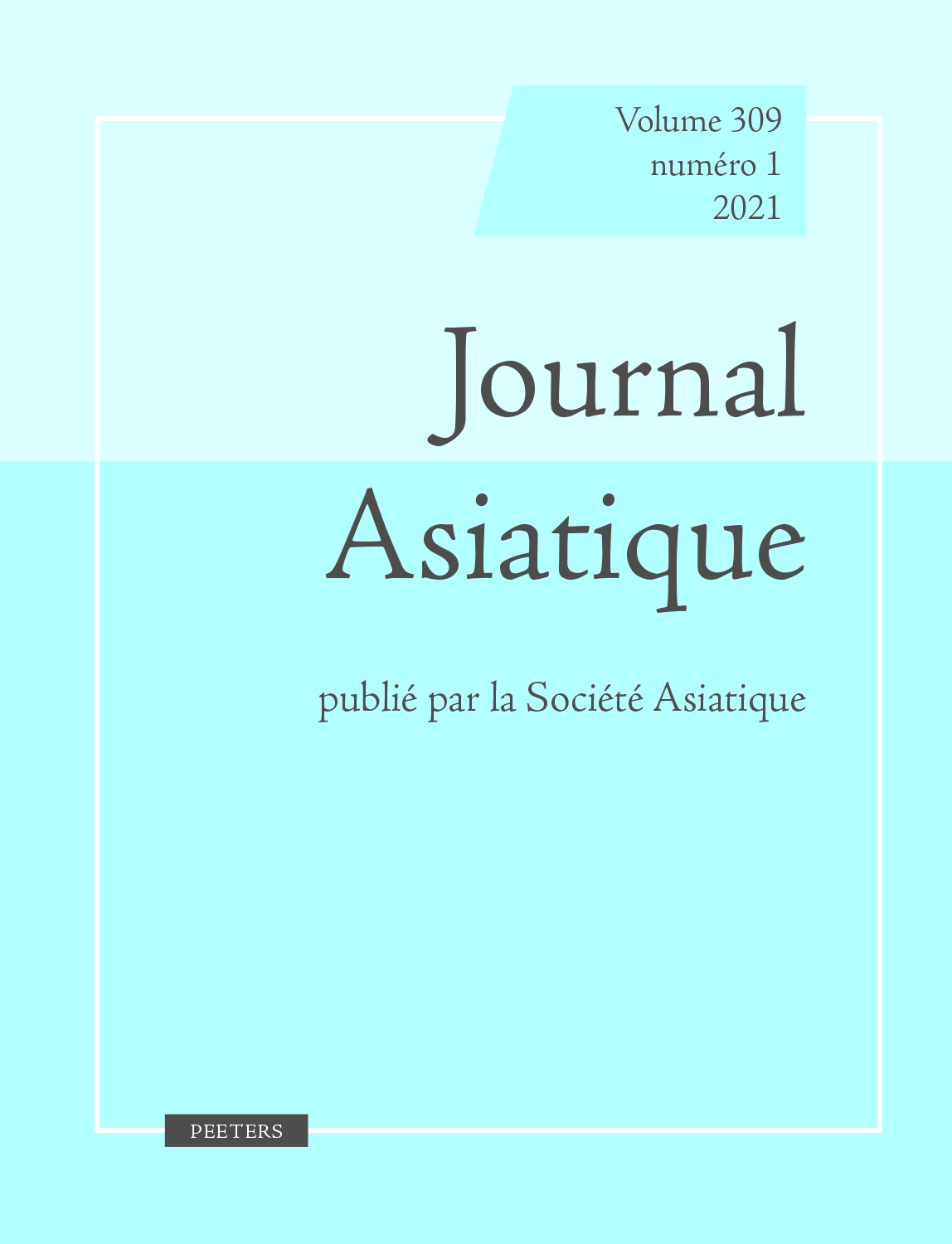 previous article in this issue previous article in this issue | next article in this issue  |

Preview first page |
Document Details : Title: Talking with God Subtitle: The Zoroastrian ham.paršti or Intercalation Ceremonies Author(s): CANTERA, Alberto Journal: Journal Asiatique Volume: 301 Issue: 1 Date: 2013 Pages: 85-138 DOI: 10.2143/JA.301.1.2994461 Abstract : Among the different variants of the Zoroastrian long liturgy attested in the manuscripts we find two in which a coherent text in Young Avestan is divided into sections that are intercalated between the central part of this ceremony, the recitation of the Old Avestan texts. They are the Widēwdād and Wištāsp Yašt ceremonies. Usually they are considered late compositions in which the long liturgy has been extended artificially through the intercalation of of already exiting Young Avestan texts without any relationship to the Old Avestan texts they accompany. Actually, these intercalation ceremonies reflect a ritual that is as old as the version of the long liturgy we know. The journey of the sacrifiants to the hereafter during the recitation of the Old Avestan texts made possible an encounter and an interview with god. The questions and, above all, Ahura Mazdā’s answers are reproduced live in the sacrifice. Thus, all Young Avestan texts belonging to the frašna-genre that is consisting of Zaraθuštra’s questions and Ahura Mazdā’s answers have been composed probably for being intercalated between the Old Avestan texts in the Zoroastrian long liturgy. Parmi les différentes variantes de la longue liturgie zoroastrienne attestées dans les manuscrits, deux d’entre eux montrent des sections intercalées entre les textes vieil-avestiques qui constituent le noyau central de la cérémonie. Les textes de ces sections forment un ensemble cohérent. Il s’agit des cérémonies de Widēwdād et de Wištāsp Yašt. Jusqu’à présent, on a considéré ces cérémonies comme des compositions tardives dans lesquelles on avait intercalé des textes en avestique récent sans aucune relation avec les textes vieil-avestiques qu’ils accompagnent afin de prolonger artificiellement la longue liturgie. Au contraire, nous proposons ici que ces cérémonies d’intercalation reflètent un rituel aussi ancien que la version de la longue liturgie que nous connaissons. Le voyage du sacrifiant dans l’au-delà durant la récitation des textes vieil-avestiques rendait possible une rencontre avec la divinité et donnait ainsi l’occasion de lui poser des questions. Ces questions, mais surtout les réponses d’Ahura Mazdā, sont reproduites sous forme de dialogue dans le sacrifice. En fait, tous les textes en avestique récent du genre frašna, c’est-à-dire des questions posées par Zaraθuštra auxquelles Ahura Mazdš répond, ont vraisemblablement été composés pour être intercalés entre les textes vieil-avestiques dans la longue liturgie zoroastrienne. |
|


